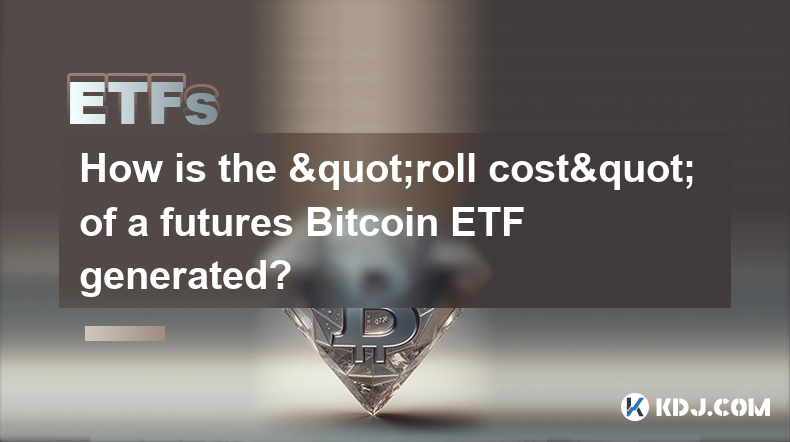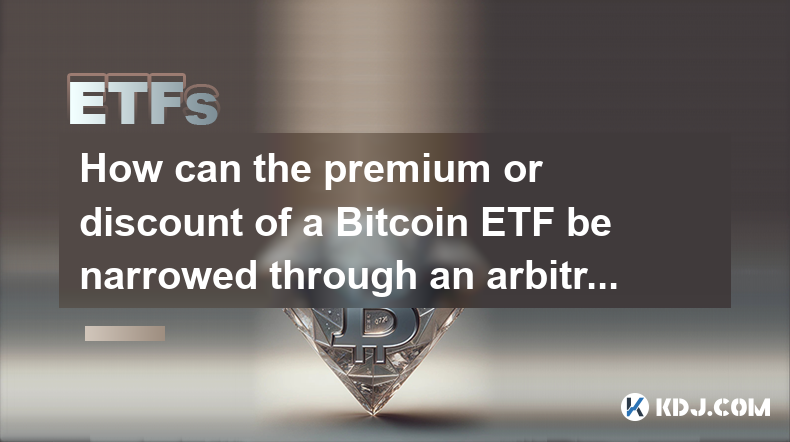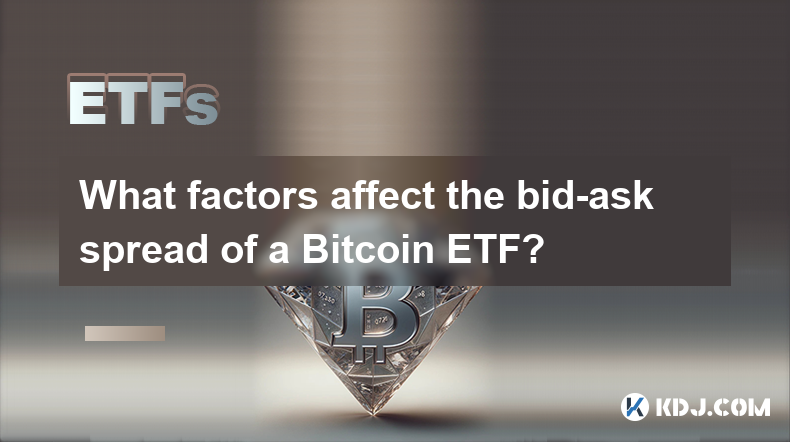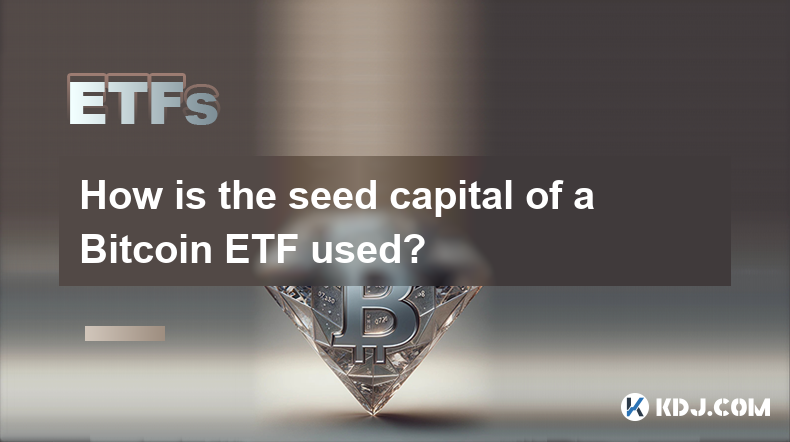-
 Bitcoin
Bitcoin $88,171.9943
0.77% -
 Ethereum
Ethereum $1,583.5013
-3.79% -
 Tether USDt
Tether USDt $0.9999
-0.01% -
 XRP
XRP $2.0788
-2.36% -
 BNB
BNB $601.6429
-0.53% -
 Solana
Solana $139.2326
-1.03% -
 USDC
USDC $1.0000
0.00% -
 Dogecoin
Dogecoin $0.1619
-0.06% -
 TRON
TRON $0.2477
1.31% -
 Cardano
Cardano $0.6267
-2.59% -
 Chainlink
Chainlink $13.0581
-3.75% -
 UNUS SED LEO
UNUS SED LEO $9.1913
-2.40% -
 Avalanche
Avalanche $19.6951
-3.57% -
 Stellar
Stellar $0.2445
-4.58% -
 Toncoin
Toncoin $2.9298
-3.54% -
 Sui
Sui $2.2407
-0.77% -
 Hedera
Hedera $0.1722
-0.30% -
 Shiba Inu
Shiba Inu $0.0...01233
-2.57% -
 Bitcoin Cash
Bitcoin Cash $337.4706
-0.29% -
 Hyperliquid
Hyperliquid $18.2488
-0.06% -
 Litecoin
Litecoin $78.5693
-1.21% -
 Polkadot
Polkadot $3.7036
-5.93% -
 Dai
Dai $1.0000
-0.01% -
 Bitget Token
Bitget Token $4.4181
-1.29% -
 Ethena USDe
Ethena USDe $0.9992
-0.01% -
 Pi
Pi $0.6291
-1.32% -
 Monero
Monero $216.0820
0.38% -
 Pepe
Pepe $0.0...07910
0.59% -
 Uniswap
Uniswap $5.2401
-3.83% -
 OKB
OKB $50.7369
-0.42%
Is Bitcoin ETF the only option to invest in cryptocurrencies?
Investing in crypto isn't limited to Bitcoin ETFs; options include direct exchange purchases, Grayscale Bitcoin Trust, crypto funds, mining, staking, and lending/borrowing platforms, each with unique risks and rewards.
Feb 27, 2025 at 01:36 pm

Is Bitcoin ETF the only option to invest in cryptocurrencies?
Key Points:
- No, a Bitcoin ETF is not the only way to invest in cryptocurrencies. There are numerous avenues for crypto investment, each with its own advantages and disadvantages. Understanding these alternatives is crucial for diversifying your portfolio and mitigating risk.
- Direct ownership via exchanges: This offers the most control but involves higher risk and requires understanding of security protocols and market volatility.
- Grayscale Bitcoin Trust (GBTC): While not an ETF, it provides exposure to Bitcoin without the direct complexities of exchange trading. However, it often trades at a premium or discount to the Net Asset Value (NAV) of its Bitcoin holdings.
- Cryptocurrency investment funds: These professionally managed funds offer diversified exposure to a basket of cryptocurrencies, potentially reducing individual coin risk.
- Mining: This involves acquiring and operating hardware to validate transactions and earn cryptocurrency rewards. It's capital-intensive and requires technical expertise.
- Staking: This involves locking up your cryptocurrency holdings to secure a blockchain network and earn rewards in return. It's generally less resource-intensive than mining.
- Crypto lending and borrowing platforms: These platforms allow investors to lend out their crypto holdings to earn interest or borrow crypto using their holdings as collateral. They carry significant risk.
- Direct Ownership via Cryptocurrency Exchanges:
This is arguably the most straightforward approach to cryptocurrency investment. It involves creating an account on a reputable cryptocurrency exchange, such as Coinbase, Kraken, or Binance (though always proceed with caution and thorough research on exchange security and reputation). Once you have an account funded (typically via bank transfer or credit/debit card, though methods vary by exchange), you can purchase Bitcoin or other cryptocurrencies directly. This gives you complete control over your assets; you own the private keys associated with your cryptocurrency wallet, and you are responsible for their security. However, this method also carries significant risk.
The security of your assets rests entirely on your ability to protect your private keys. Loss of your private keys means irretrievable loss of your funds. Exchanges themselves can be vulnerable to hacking, and while reputable exchanges implement robust security measures, there's always inherent risk. Moreover, the cryptocurrency market is notoriously volatile, meaning the value of your holdings can fluctuate dramatically in short periods. You need a strong understanding of market dynamics, risk management, and technical analysis to navigate this landscape successfully. Furthermore, the regulatory landscape is constantly evolving, and navigating different jurisdictional rules and regulations can be complex. Finally, you'll need to understand the various fees associated with trading, such as transaction fees, withdrawal fees, and potential spread costs. These costs can significantly impact your overall return on investment. Thorough research and due diligence are absolutely critical before engaging in direct cryptocurrency ownership. The learning curve can be steep, requiring understanding of blockchain technology, wallet security, and market analysis. Ignoring these aspects can lead to substantial financial losses.
- Grayscale Bitcoin Trust (GBTC):
The Grayscale Bitcoin Trust is a publicly traded investment vehicle that holds Bitcoin. It offers a way to gain exposure to Bitcoin without the need to directly interact with cryptocurrency exchanges. This can be appealing to investors who are less comfortable with the technical aspects of directly managing cryptocurrency. However, GBTC is not an ETF (Exchange-Traded Fund), and this distinction is significant. ETFs are typically more liquid and trade closer to their net asset value (NAV), which is the market value of the underlying assets. GBTC, on the other hand, often trades at a premium or discount to its NAV. This means you might pay more or less than the actual value of the Bitcoin it holds. The premium or discount can fluctuate considerably, influenced by market sentiment and supply and demand dynamics. Understanding the reasons for this price discrepancy is essential before investing. The lack of liquidity compared to a true ETF also means that buying and selling GBTC can be less efficient, potentially leading to higher transaction costs. Furthermore, the structure of GBTC means there is limited ability for investors to redeem their shares for physical Bitcoin. This limits flexibility compared to direct ownership. Despite these limitations, for some investors, the perceived ease of access and reduced technical hurdles might outweigh the drawbacks. However, thorough research into the current premium/discount and the potential for future price fluctuations is vital before considering this investment.
- Cryptocurrency Investment Funds:
Numerous investment funds specialize in cryptocurrencies. These funds are professionally managed and offer diversification across a range of crypto assets. This diversification can help mitigate the risk associated with investing in individual cryptocurrencies. The fund managers typically employ various investment strategies, aiming to generate returns through market timing, arbitrage, or other sophisticated approaches. However, it's crucial to carefully review the fund's investment strategy, fee structure, and past performance before investing. Fees can be significant, impacting overall returns. Past performance is not indicative of future results, and the volatile nature of cryptocurrencies means even experienced fund managers can experience losses. It's important to understand the fund's risk profile and whether it aligns with your own investment goals and risk tolerance. Furthermore, regulatory oversight of cryptocurrency funds varies across jurisdictions. It's essential to ensure the fund is regulated appropriately and adheres to relevant legal and ethical standards. Due diligence should include reviewing the fund's prospectus, which outlines the investment strategy, fees, risks, and other important information. Comparing different funds based on their investment strategies, fees, and track records is vital to making an informed decision. It's also beneficial to assess the reputation and experience of the fund managers and their team.
- Mining:
Cryptocurrency mining involves using specialized hardware to solve complex mathematical problems and validate transactions on a blockchain network. Successful miners are rewarded with newly minted cryptocurrencies. While potentially lucrative, mining is a capital-intensive endeavor. The initial investment in hardware (ASIC miners for Bitcoin, for example) can be substantial, and the ongoing costs of electricity consumption can be significant. Furthermore, mining requires technical expertise to set up and maintain the mining equipment and manage the associated software. The profitability of mining is also influenced by factors such as the price of the cryptocurrency being mined, the difficulty of the mining process (which increases as more miners join the network), and the cost of electricity. Mining is also a highly competitive field, and smaller miners might find it difficult to compete with larger, more established operations. Environmental concerns associated with the high energy consumption of mining are also increasingly important considerations. Finally, regulatory changes could impact the profitability and legality of mining in certain jurisdictions. Therefore, a comprehensive understanding of the technical aspects, financial implications, and regulatory environment is essential before venturing into cryptocurrency mining. It's not a passive investment; it requires active management and technical skills.
- Staking:
Staking is a process where cryptocurrency holders lock up their assets to help secure a blockchain network. In return, they earn rewards in the form of newly minted cryptocurrency or transaction fees. Compared to mining, staking is generally less resource-intensive, requiring less specialized hardware and electricity. However, it still requires a basic understanding of blockchain technology and the specific protocols of the cryptocurrency being staked. The rewards earned from staking can vary depending on the cryptocurrency, the amount staked, and the network's overall activity. The locked-up assets are typically unavailable for trading during the staking period, which can range from a few days to several months. It's crucial to understand the terms and conditions of staking before committing your assets. The risk of staking includes the potential loss of staked assets due to vulnerabilities in the blockchain network or the staking platform itself. Moreover, the value of the rewards earned can fluctuate depending on the price of the cryptocurrency. Therefore, a thorough understanding of the risks and rewards associated with staking is necessary before engaging in this activity. Researching the reputation and security of the staking platform is crucial to mitigating potential losses.
- Crypto Lending and Borrowing Platforms:
Crypto lending and borrowing platforms allow users to lend out their cryptocurrency holdings to earn interest or borrow cryptocurrency using their holdings as collateral. These platforms can offer attractive interest rates for lenders and convenient access to capital for borrowers. However, they also carry significant risks. The risk of default by borrowers is a primary concern, meaning lenders might not receive their principal back. The platforms themselves could also face financial difficulties or even insolvency. Furthermore, the regulatory landscape for these platforms is still developing, and there's a lack of comprehensive consumer protection in many jurisdictions. Security breaches are another potential risk, with the possibility of losing funds due to hacking or other security vulnerabilities. Smart contract risks associated with the underlying technology used by these platforms are also a significant factor. Therefore, it's crucial to carefully evaluate the risk profile of each platform before participating. Choosing reputable and well-established platforms with strong security measures is essential. Diversifying your lending across multiple platforms can help to mitigate risk. However, even with careful due diligence, the potential for significant losses remains.
FAQs:
Q: Are Bitcoin ETFs safer than direct ownership of Bitcoin?
A: Bitcoin ETFs offer a degree of indirect ownership, managed by a regulated entity. This reduces the risk associated with self-custody of private keys. However, they are still subject to market volatility and the risks associated with the underlying Bitcoin price. No investment is entirely risk-free.
Q: What are the tax implications of investing in cryptocurrencies through different methods?
A: Tax implications vary significantly depending on the jurisdiction, the investment method, and the duration of the holding period. Capital gains taxes are typically applicable on profits from cryptocurrency trading or investment. Tax laws regarding cryptocurrencies are still evolving in many countries, so seeking professional tax advice is essential.
Q: How can I diversify my cryptocurrency investments beyond Bitcoin?
A: Diversification involves spreading your investments across multiple cryptocurrencies, as well as other asset classes. Researching altcoins (alternative cryptocurrencies) and understanding their potential risks and rewards is crucial. Consider exploring different blockchain technologies and project goals before investing.
Q: What are the risks associated with crypto lending and borrowing platforms?
A: These platforms carry risks such as counterparty risk (borrowers defaulting), platform insolvency, smart contract vulnerabilities, and security breaches. Thorough due diligence is crucial, and diversification across multiple platforms can help mitigate some of these risks.
Q: Is mining still profitable in 2024?
A: The profitability of mining depends on several factors, including the price of the cryptocurrency, electricity costs, mining difficulty, and the efficiency of your mining hardware. It's a complex calculation that requires careful consideration of all these variables. It's no longer as readily accessible to individual investors as it once was.
Q: What are the regulatory hurdles to overcome for Bitcoin ETFs to be approved in the US?
A: Regulatory approval for Bitcoin ETFs in the US has been delayed due to concerns regarding market manipulation, investor protection, and the overall regulatory framework for cryptocurrencies. These hurdles are constantly evolving as the regulatory landscape for cryptocurrencies develops.
Disclaimer:info@kdj.com
The information provided is not trading advice. kdj.com does not assume any responsibility for any investments made based on the information provided in this article. Cryptocurrencies are highly volatile and it is highly recommended that you invest with caution after thorough research!
If you believe that the content used on this website infringes your copyright, please contact us immediately (info@kdj.com) and we will delete it promptly.
- U.S. Digital Asset Firms Are Reportedly Considering Applying for Bank Charters and Licenses
- 2025-04-22 15:40:12
- OM Slides Deeper as Massive Token Burn Falls Flat
- 2025-04-22 15:40:12
- Ethereum Crashes, Its Share of the Overall Virtual Asset Market Fell Below 7%
- 2025-04-22 15:35:12
- Dogecoin Community Celebrates Dogeday 4/20, Buoyed by ETF Filing Buzz
- 2025-04-22 15:35:12
- ZetaChain Integrates Arbitrum to Offer Streamlined Universal App Usage
- 2025-04-22 15:30:12
- Deutsche Bank and Standard Chartered Are Expanding Their Crypto Operations in the United States
- 2025-04-22 15:30:12
Related knowledge

What is the difference in returns between long-term holding of a Bitcoin ETF and holding Bitcoin directly?
Apr 09,2025 at 04:15am
When considering the difference in returns between long-term holding of a Bitcoin ETF and holding Bitcoin directly, it's essential to understand the nuances and factors that affect each investment option. Both approaches have their unique advantages and potential drawbacks, which can significantly impact the overall returns over time. Understanding Bitc...

How is the "roll cost" of a futures Bitcoin ETF generated?
Apr 08,2025 at 01:22pm
The 'roll cost' of a futures Bitcoin ETF is a critical concept for investors to understand, as it directly impacts the performance of the ETF. In this article, we will delve into the mechanics of how the roll cost is generated, exploring the underlying processes and factors that contribute to this cost. Understanding Futures ContractsFutures contracts a...

How can the premium or discount of a Bitcoin ETF be narrowed through an arbitrage mechanism?
Apr 09,2025 at 12:07am
Arbitrage mechanisms play a crucial role in narrowing the premium or discount of a Bitcoin Exchange Traded Fund (ETF). Understanding how these mechanisms work can provide valuable insights into the dynamics of Bitcoin ETFs and their relationship with the underlying asset. This article will delve into the specifics of how arbitrage can be used to align t...

What factors affect the bid-ask spread of a Bitcoin ETF?
Apr 08,2025 at 08:50pm
The bid-ask spread of a Bitcoin Exchange Traded Fund (ETF) is a critical metric that investors and traders closely monitor. It represents the difference between the highest price a buyer is willing to pay (bid) and the lowest price a seller is willing to accept (ask). Several factors influence this spread, and understanding them can help investors make ...

How is the seed capital of a Bitcoin ETF used?
Apr 10,2025 at 02:15pm
The seed capital of a Bitcoin ETF plays a crucial role in the establishment and operation of the fund. This initial investment is used to create the fund's underlying assets, manage operational costs, and ensure the ETF can start trading on an exchange. Understanding how this seed capital is utilized provides insight into the mechanics of Bitcoin ETFs a...

What is the difference between "physically backed" and "synthetic" Bitcoin ETFs in terms of holding assets?
Apr 10,2025 at 04:56pm
Bitcoin Exchange Traded Funds (ETFs) have become a popular way for investors to gain exposure to the cryptocurrency market without directly owning the underlying asset. There are two primary types of Bitcoin ETFs: physically backed and synthetic. Understanding the differences between these two types, particularly in terms of how they hold assets, is cru...

What is the difference in returns between long-term holding of a Bitcoin ETF and holding Bitcoin directly?
Apr 09,2025 at 04:15am
When considering the difference in returns between long-term holding of a Bitcoin ETF and holding Bitcoin directly, it's essential to understand the nuances and factors that affect each investment option. Both approaches have their unique advantages and potential drawbacks, which can significantly impact the overall returns over time. Understanding Bitc...

How is the "roll cost" of a futures Bitcoin ETF generated?
Apr 08,2025 at 01:22pm
The 'roll cost' of a futures Bitcoin ETF is a critical concept for investors to understand, as it directly impacts the performance of the ETF. In this article, we will delve into the mechanics of how the roll cost is generated, exploring the underlying processes and factors that contribute to this cost. Understanding Futures ContractsFutures contracts a...

How can the premium or discount of a Bitcoin ETF be narrowed through an arbitrage mechanism?
Apr 09,2025 at 12:07am
Arbitrage mechanisms play a crucial role in narrowing the premium or discount of a Bitcoin Exchange Traded Fund (ETF). Understanding how these mechanisms work can provide valuable insights into the dynamics of Bitcoin ETFs and their relationship with the underlying asset. This article will delve into the specifics of how arbitrage can be used to align t...

What factors affect the bid-ask spread of a Bitcoin ETF?
Apr 08,2025 at 08:50pm
The bid-ask spread of a Bitcoin Exchange Traded Fund (ETF) is a critical metric that investors and traders closely monitor. It represents the difference between the highest price a buyer is willing to pay (bid) and the lowest price a seller is willing to accept (ask). Several factors influence this spread, and understanding them can help investors make ...

How is the seed capital of a Bitcoin ETF used?
Apr 10,2025 at 02:15pm
The seed capital of a Bitcoin ETF plays a crucial role in the establishment and operation of the fund. This initial investment is used to create the fund's underlying assets, manage operational costs, and ensure the ETF can start trading on an exchange. Understanding how this seed capital is utilized provides insight into the mechanics of Bitcoin ETFs a...

What is the difference between "physically backed" and "synthetic" Bitcoin ETFs in terms of holding assets?
Apr 10,2025 at 04:56pm
Bitcoin Exchange Traded Funds (ETFs) have become a popular way for investors to gain exposure to the cryptocurrency market without directly owning the underlying asset. There are two primary types of Bitcoin ETFs: physically backed and synthetic. Understanding the differences between these two types, particularly in terms of how they hold assets, is cru...
See all articles























































































